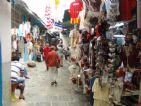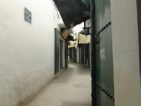
Bazaar
Comparisson reports are under license of:

Lo que dice el Arxiduc:
“Each trade has its own bazaar, with the shops also serving as workshops and homes at the same time. In the bazaar for fabrics, we see the most beautiful Tunisian silks hanging, djellabas from Djerba and the interior of the country, Jewish overcoats and Arab dresses for members of the harem. Gold, embroidery and all the wealth of colour make for a beautiful image, increasing even more with their layout inside the small, attractive shops.
Continuing on, we reach the fez bazaar, where thin Moorish boys carefully cut the fuzzy hats, and the weapons bazaar which is full of different types of numerous rifles and guns; some are simple, without any decoration, but many have shiny mother-of-pearl handles. Next is the jewellery bazaar, with magical precious stones which so attract Orientals, and items made of gold and silver in small, well-closed little wooden boxes.
Next is the carpenters’ bazaar, where, amongst other things, they sell small boxes decorated with mother of pearl. In addition, there are the food and fruit bazaars, others for tobacco and that aromatic herb with which Moorish women paint their nails, fingers, forefront and, from time to time, their feet with an orangey red colour.”
Archduke Ludwig Salvator of Austria, Tunis. Ein bild aus dem nordafrikanischen leben, Heinrich Mercy, Prague, 1870





















